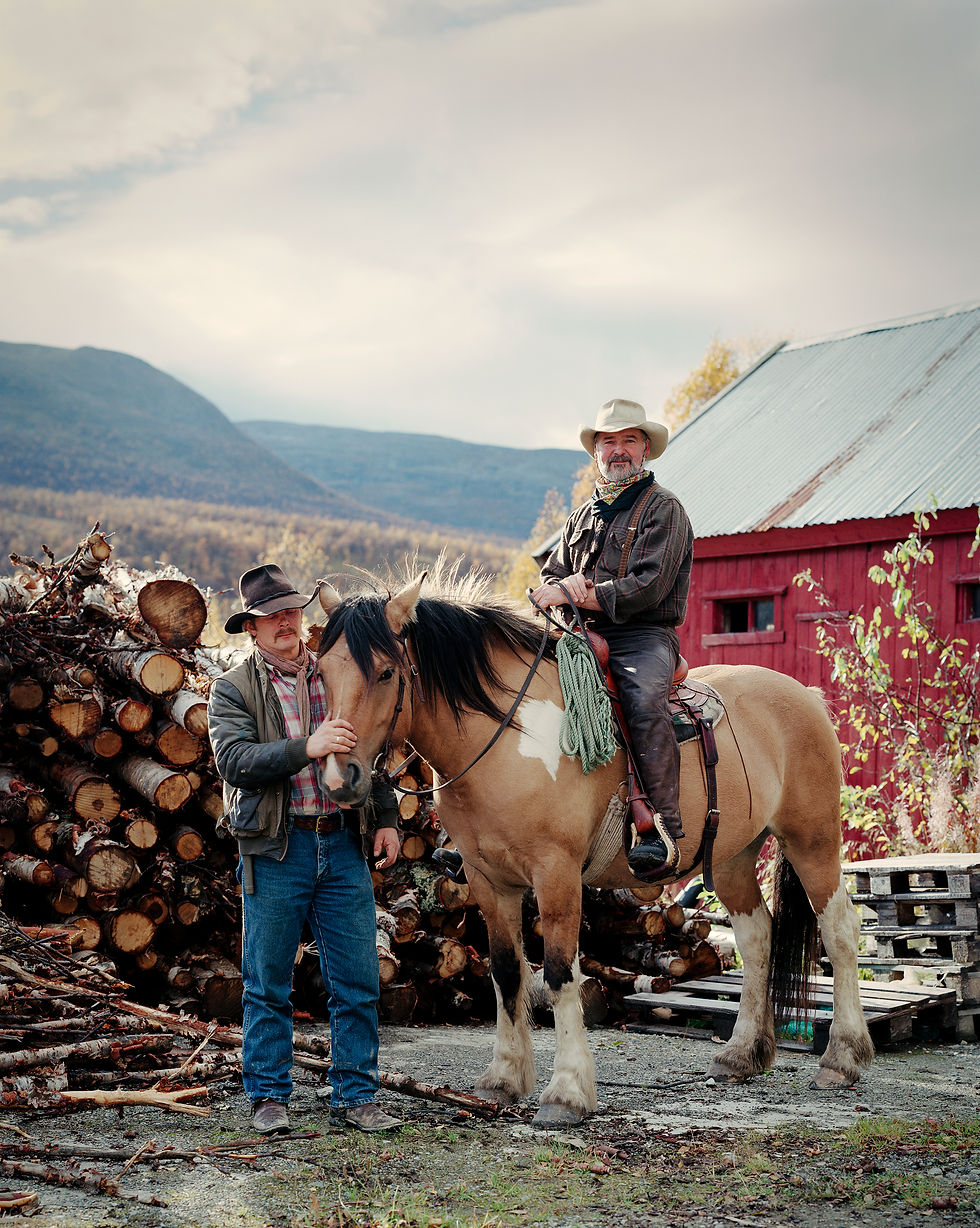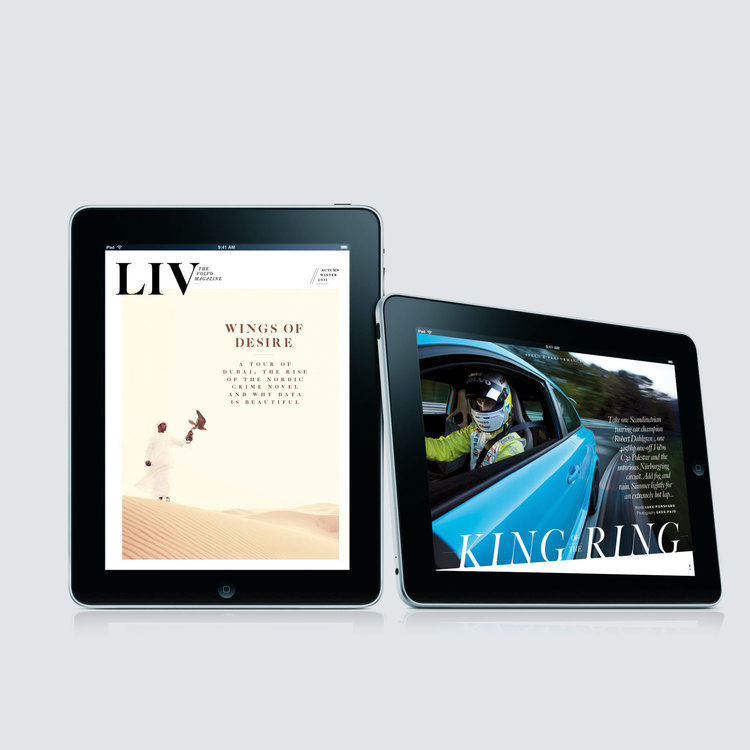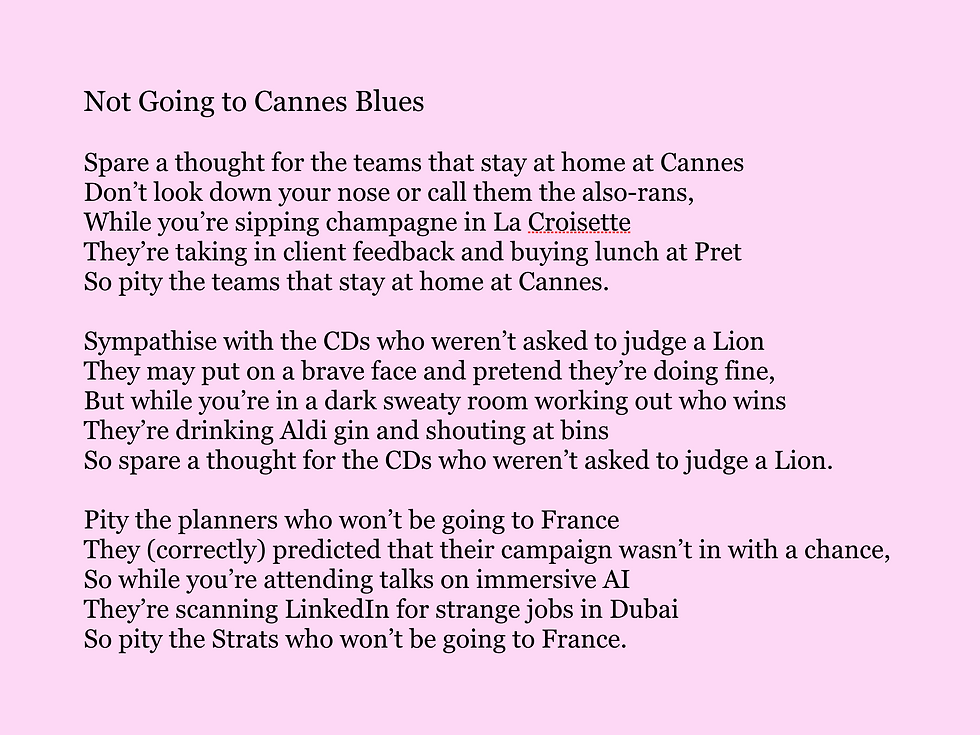Writing for The Man
- Bill Dunn

- Jun 28, 2019
- 8 min read
I was at this content awards evening and I bumped into an art director I worked with on a magazine back in the days before people started saying ‘back in the day’ – or indeed, ‘content’. On hearing I’m the editorial director of an advertising agency, he accused me of selling out. I told him he could go away quickly, because we’re all selling. Magazines are really advertising agencies – they just do it by stealth.
“It’s all fookin’ cricket bats and watches,” as my late pal Mark E Smith succinctly summed up while leafing through the issue of GQ in which I’d interviewed him. And he was right. Everything in a men’s magazine has to be brilliant, and capable of being sold. So I’d write enthusiastically – often, hagiographically – about fashion, actors, musicians, tech products, cars, motorbikes.

To extend the advertising parallel further, we used partnerships – in the form of guest editors and celebrity columnists. And, even in the days when we had just one office computer linked to the Internet, we were already thinking multi-platform.
For a 1997 Esquire article on discovering the West Pole (somewhere off The Galapagos Islands), Bentley lent us a car and chauffeur to drive us off, Tag Heuer sponsored the expedition, travel company Qasar Nautica got us there, and the Saturday Telegraph amplified it. We even did our own PR, attempting to present Prince Charles with a vial of seawater from The Pole.
But aside from this kind of stuff, the free press wasn’t really free. A lot of the ‘journalism’ we produced featured advertiser’s products, which leads to the age-old conflict of truth and Mammon. As Style Director on GQ, every month I’d shuffle into the office of the late, great publisher, Peter Stuart, where he’d firmly but charmingly show me a chart detailing the number of times my team and I had featured Ralph Lauren, Versace and all the big advertisers in the last few months. Forget that interview with complex genius Alexander McQueen; we needed to feature the designers who actually paid us. Hang on… I was working – or writing for – The Man.
Maybe I was thick, idealistic or naive. Or all three. But everything up until then had seemed pretty clear to me. Magazines only had two building blocks: editorial pages and adverts. Adverts paid for us to produce features, and it was the features that drew in readers (and the holy grail, subscribers), which meant the magazine could charge more money for adverts, and so the happy spiral went on, snake eating its tail.
There was a third way – editorial promotions – where a company would take over a couple of magazine pages and try to make it look like they were part of the rest of the magazine. It wasn’t really fooling anyone.
But it turned out there was an actual third way. While I’d been toiling at the coalface of style journalism, sipping warm champagne at shop openings and gadding about fashion shows, Mike Potter and Christopher Ward (ex-editor of the Daily Express) had been busily starting a revolution. They founded Redwood Publishing and produced whole, proper magazines with proper editorial values. For brands.
The idea spread, and by 2005 I found myself guest editing Haymarket’s Jaguar Magazine for a year. I really enjoyed my brief – which was to inject the magazine with the kind of men’s lifestyle content I’d been producing for GQ and Esquire. Now I could feature the same breadth of topics as men’s magazines did, yet they were somehow more ‘honest’ because they were clearly for, and paid for, by a brand.
For this, and future car magazines I was to edit, we had a loose ‘process’. The client would say what cars we had to include and the things about them that made them good. Then we’d have an editorial meeting about where we’d take the cars and who we could meet in them so they looked even more exciting. We’d troop up to meet the client to tell them what we’d like to do, using phrases like ‘car as enabler’. This usually meant we wanted to go to somewhere sunny, drive some new cars fast, then drink margaritas in the evening. Or commission Professor Brian Cox to drive us round the Large Hadron Collider in Geneva (this actually happened). The client would listen, ask us to include a bit more car, then give us some money to do it all.
We’d arrive to see the clients a few months later, tanned and full of vitamin C from all the lime juice, and show them the layouts. The client would again ask (a little more insistently this time) if we had any more shots of the car, redact any references to margaritas from the feature, and sign the magazine off.
And this slightly ramshackle approach worked, because we had a genuine enthusiasm for the subject (cars) and the medium (making magazines) and because we were lucky enough to know we were lucky. We were doing what we wanted to do, and getting paid for it. There’s still not many dopamine rushes to beat knifing open a box of fresh magazines and seeing your work inside.

There was also a culture of excellence. The magazines were beautifully shot by talented photographers. They were designed by the best graphic designers and written by great writers. They were a pleasure to receive and to behold. And customers loved them; reading them, collecting them, showing them to friends and acting on them, buying new cars, products and services in the process. Volvo’s magazine LIV (which I edited from 2006-2010) had a 95% recall rate and 2/3 of readers took some form of action having read it. Each copy of LIV was read for an average of 40 minutes. You can't buy this kind of engagement, however much money you throw at Facebook.
Editorial content was great for brands too, as here was a set of people being paid comparatively little and producing a lot of stuff – or “assets” (as we learned to call them). Customer titles had become a fruitful source of content, and because we used the best photographers who were sick of doing advertising and wanted to be part of a story (ie, rough it with a bit of exciting editorial for a while), the car companies got assets that were way more authentic and emotional than the standard press shots.
Then it all got Digital, and suddenly we had to learn how to produce videos to complement our assignments. I read David Mamet’s excellent essay On Directing Film and drew my first storyboard a day later. If you can tell a story on paper, you can do a storyboard, because editors – the best ones, anyway – think in words and pictures and stories. They know a beginning, middle and an end.
And then it all got serious. Customer magazines moved from the CRM (Customer Relations Management) department (generally nice people in pullovers who trusted us to do our jobs) to Marcoms (marketing and communication). This meant that we were working for clients who were used to the detail and rigour of the advertising industry.

They suddenly demanded not just a back-of-a-fag-packet itineraries but pre-production meetings, pictures and biogs of the people we would be meeting on our road trips, even defining what the people we’d feature would look like (“ruffled but smart short dark hair, one day’s stubble, white shirt and chinos” was an actual requirement on one shoot).
They weren’t comfortable with editorial. By this I mean they weren’t happy signing off something where things could happen; they wanted to know exactly what would happen. Journalism doesn’t work like this. I could interview you about a subject, but even after extensive research I would only have a rough idea of what you’re going to say. If I go somewhere, I have a rough idea of what I’ll find, but a good journalist is always curious and keeps their eyes open for surprises.
While guest-editing Jaguar Magazine I did a drive story up the coast of Norway with the photographer Andrew Shaylor. We chanced upon some cowboys – real cowboys dressed in Stetsons, spurs and chaps – herding cows. We didn’t know about them, so of course they weren’t on the mood board, but it helped make the article live and breathe (that's the picture at the top of this article).
Because we were now thinking multi-channel, the costs rocketed. A road trip with a journalist and a photographer is a pretty cheap content stream. Add a videographer and a producer, and it quickly becomes a production. Hell, we probably need a director, a data wrangler, a make-up artist, a sound man and some lights. And because it had all got more expensive, the client needed to go along to see how their money was being spent. Which meant an account director needed to go along to look after the client.
I don’t blame the clients. I mean, I’d ask for more detail and made the idea work harder if it were my money – but clients used to trust editorial teams, and would hardly ever attend anything we did (largely because a magazine is made up of so many features that it would have meant they were out of the office almost as much as we were).
All this new-found attention to what we were doing instantly hiked up the price of an editorial feature to near-advertising levels. A recce before doing a drive story in Mexico might be feasible if you’re making a TV commercial but not if you’re doing a road trip feature. The recce budget IS the feature budget. And those clients now wanted “servicing” 24/7 by an account director whose job spec previously had just been to manage the staff and balance the books.
Inter-agency working was new to us, too. We sat in meetings with “the lead agency”, a bunch of men with beards who told us about brand platforms and mysteriously disappeared every six months to be replaced by a new set of men with beards and a new brand platform. None of whom seemed to know much about cars. I sat through a meeting where one of these people continuously referred to the head-up display of a car as a “heads-up” display – a terrifying case of when the vocabulary of middle management escapes from its confines into the real world.
Our new clients wanted manifestos, decks, graphs and tone of voice documents. They wanted to transform our gut instinct and passion for what would interest our audience into a science. And somewhere along the line, journalism got turned into content and authenticity flew out of the window.
So where are we now? A lot of agencies over the last few years have said they could do content, when actually they really couldn’t, because finding, hiring and managing the right people was too hard. Steve Jobs observed: ‘In my career I found that the best people are the ones who understand the content. They are a pain the butt to manage. You put up with it because they are so great in the content. And that’s what makes a great product. It is not process. It is content.’
Instead, agencies produced lots of process – complicated hero, hub and hygiene presentations which kept the client quiet for another quarter until they started to realise they weren’t actually getting much quality content for their money, just a lot of PowerPoint presentations. Which is, bizarrely, what they thought they wanted.
Now obviously we can’t go back, but it’s time we took a few of the things that made customer magazines so effective and applied them to the smouldering, Mordor-like battlefield of agency content.
But I’ve taken up too much of your time already, so I’ll explain all that in my next content stream.



Comments